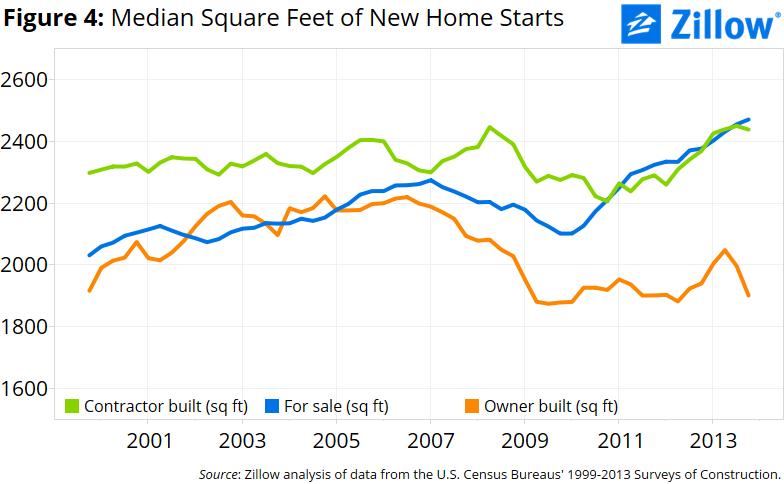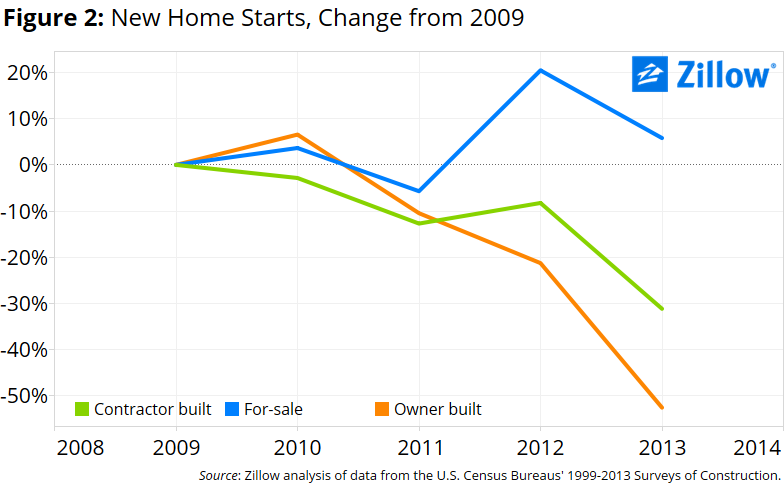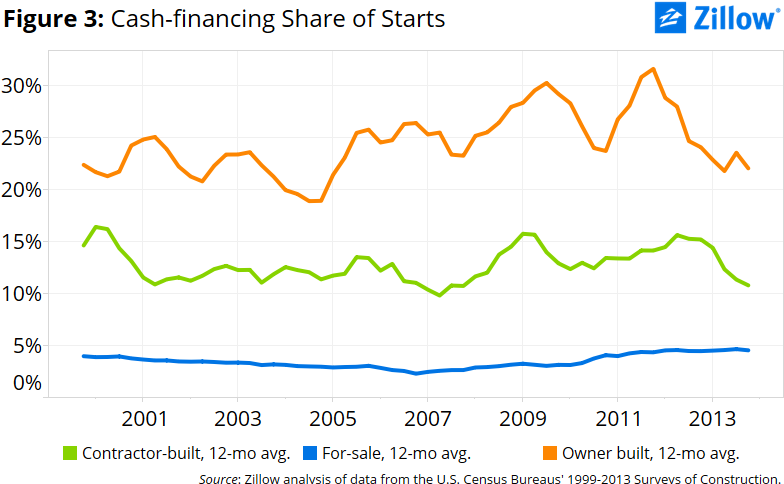- While new home sales overall have not risen much over the past few years, the number of custom-built homes has dropped remarkably and persistently since 2005.
- Since 2009, contractor-built home starts were down 31 percent, and owner-built home starts are down 53 percent.
Self-built, customized homes – constructed with or without the assistance of a general contractor – appear to be losing their appeal to many Americans.
In general, new home construction and sales have been very slow to recover from the housing crisis, lagging substantially behind existing home sales. And while new home construction is largely dominated by mass-produced homes in suburban subdivisions built for sale to the highest-bidding buyer, an often overlooked component of the decline in new home construction has been in the market for lower-volume, custom-built homes.
Custom-built homes – new homes where the landowner acts as general contractor (known as “owner-built” homes), or new homes where the landowner directly hires a general contractor (known as “contractor-built” homes) – never experienced the boom in activity during the mid-2000s as homes built specifically for sale. Figure 1a shows the number of custom-built home starts (right axis) and the number of for-sale home starts each year between 1999 and 2013.
As the number of for-sale starts plummeted in 2007, custom-built homes represented a growing share of total starts, rising from 20 percent in 2005 to a peak of 32 percent in 2009 (figure 1b). But this bump was likely more because of extraordinary declines in more typical new home starts, rather than strength in the custom-built market. Since the housing recovery began in 2009, the custom-built share of starts has fallen back to near-2005 levels.
And while for-sale starts have been slow to recover since 2009, they have nevertheless inched up. But custom-built new home starts have continued to decline (figure 2). From the 2009 trough of the housing market, for-sale new home starts were up 6 percent by 2013. But contractor-built starts were down 31 percent, and owner-built starts down 53 percent, over the same time. This trend is true in every major region of the country, particularly the Pacific region (dominated by California) and the West Central region (dominated by Texas).
 Building your own home has always been a time-, energy- and capital-intensive undertaking that is somewhat less responsive to economic and financial conditions than commercial starts built specifically for sale. It is also more likely to be undertaken by wealthier households with substantial cash on hand (figure 3): In 2013, nearly one-quarter of all owner-built homes were financed with cash on hand, about double the share of contractor-built homes financed with cash, and about five-times the share of for-sale homes purchased with cash. Presumably these higher-income groups with substantial cash on hand are the same households who have fared relatively well in recent years, at least according to the popular narrative of rising inequality.
Building your own home has always been a time-, energy- and capital-intensive undertaking that is somewhat less responsive to economic and financial conditions than commercial starts built specifically for sale. It is also more likely to be undertaken by wealthier households with substantial cash on hand (figure 3): In 2013, nearly one-quarter of all owner-built homes were financed with cash on hand, about double the share of contractor-built homes financed with cash, and about five-times the share of for-sale homes purchased with cash. Presumably these higher-income groups with substantial cash on hand are the same households who have fared relatively well in recent years, at least according to the popular narrative of rising inequality.
Despite the large share of cash financing, some evidence suggests that individuals choosing to build their own homes without the assistance of a general contractor are facing some constraints. The size of new owner-built homes fell during the recession and has remained largely flat, while the size of both new contractor-built homes and new for-sale homes has increased (figure 4).


